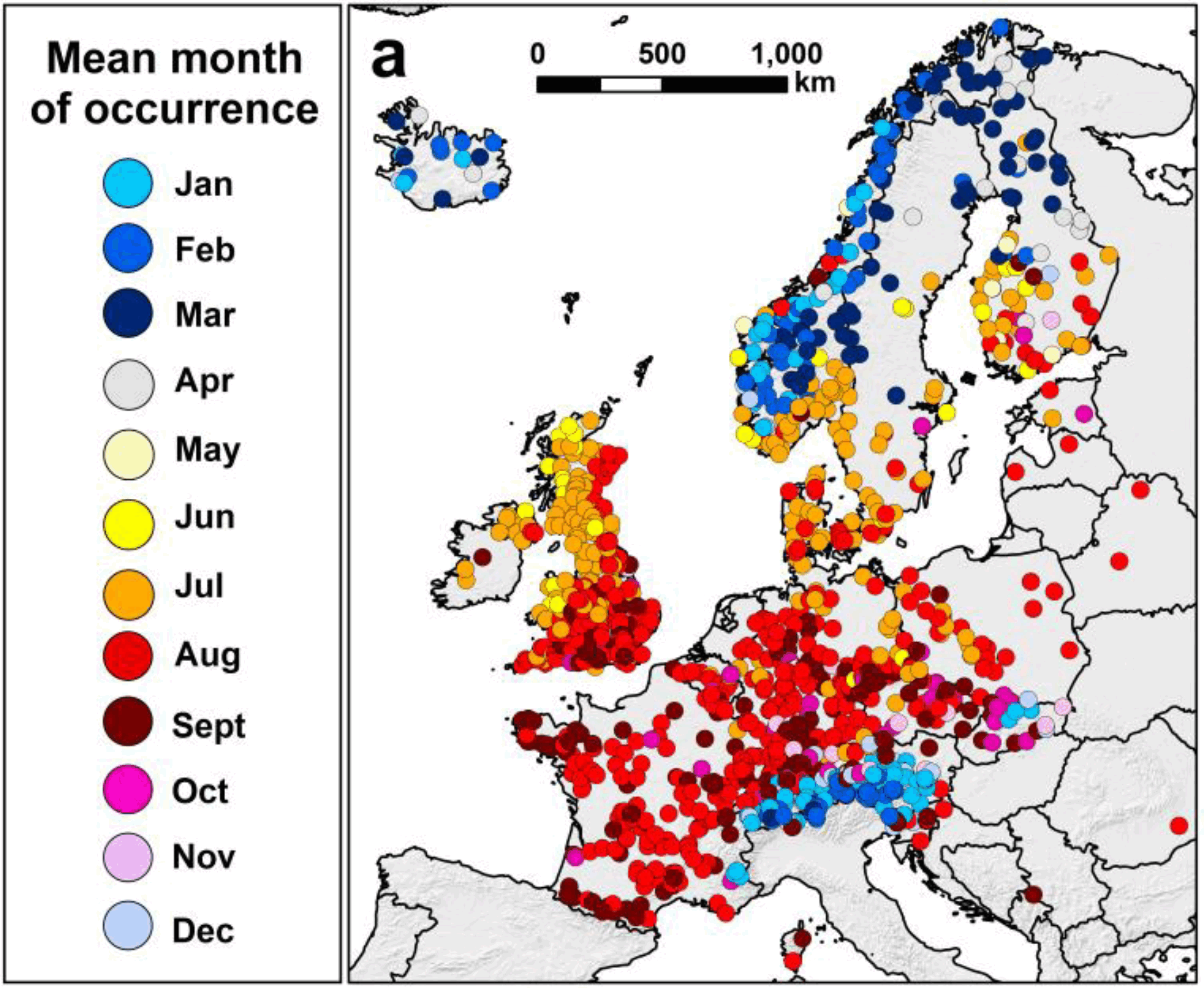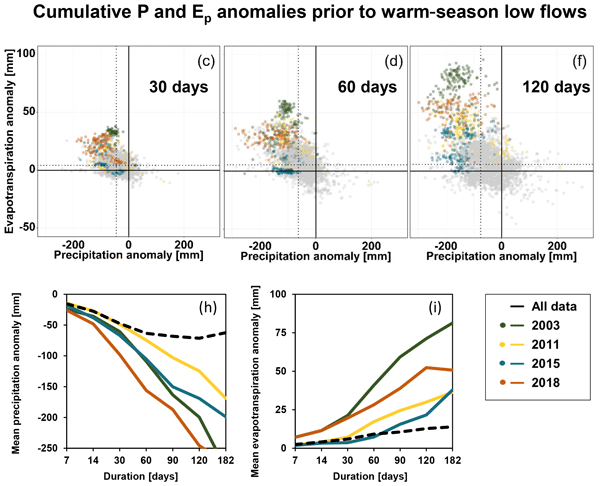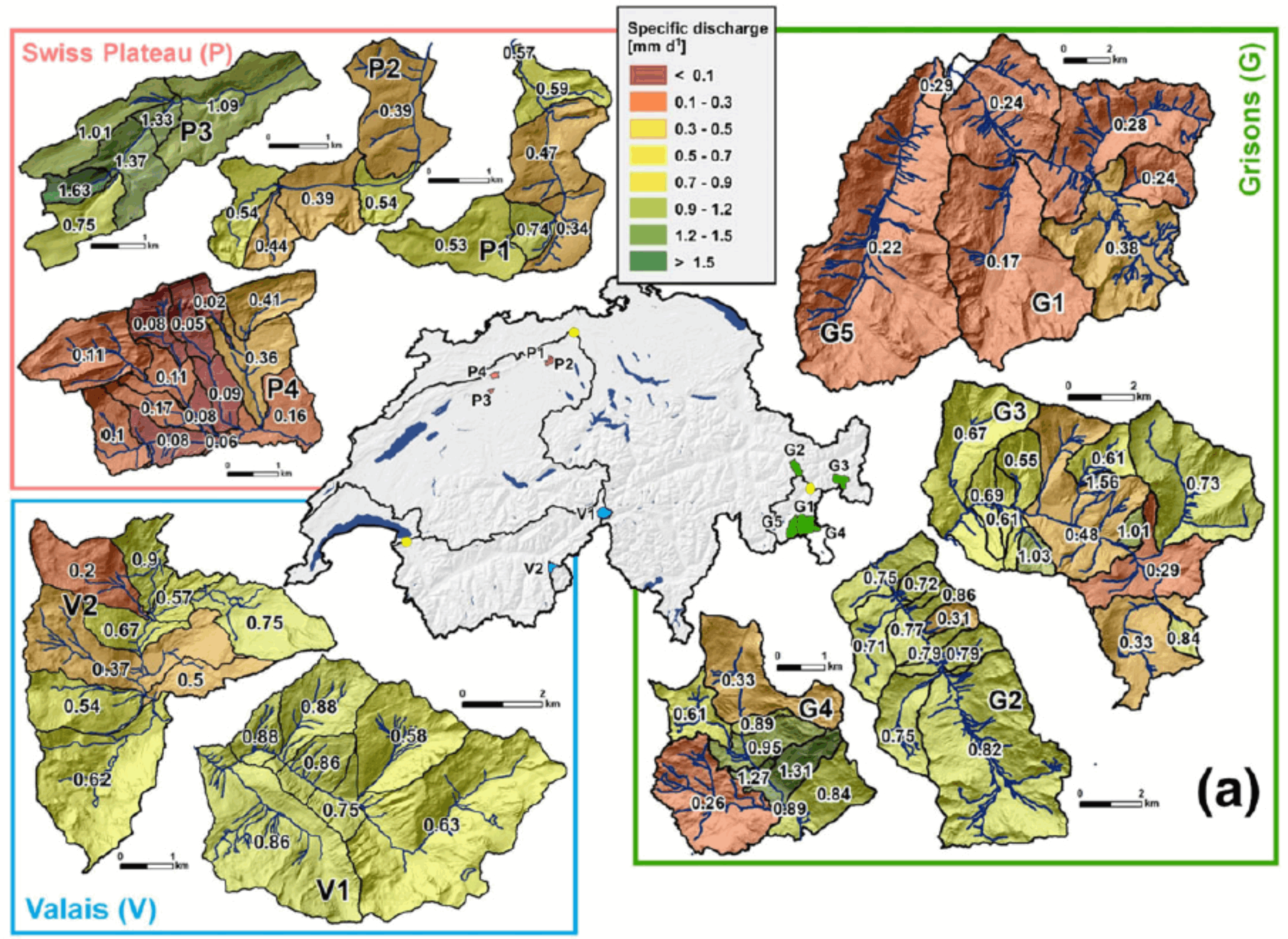LOW FLOWS - Analysis of low flow occurence in Switzerland
Dates: 2017-2019
Funding: BAFU
PhD Student: Marius Floriancic
Principal Investigator: Peter Molnar, James Kirchner
Large parts of Europe have faced extreme low river flows in recent summers with major economic and environmental consequences. Understanding the origins of extremes like these is important for water resources management and river ecology. In this research on low flows, we took a data and field observation perspective, providing insights into when, why, and how much are low flows affected by climate and landscape (basin) characteristics, and how predictable these relations are.
Timing and drivers of low flows

Low flows may occur at any time of the year, depending on the climatic conditions and hydrological processes in the catchment. Here we identified regional patterns in low-flow behaviours by characterizing the seasonal timing of 7-day annual minimum flows, and the consistency of that timing, across 1860 European and US catchments. We inferred what drives low flows by comparing the seasonality of low flows with the seasonality of potential climatic drivers. In most catchments, low flows tend to occur during late summer and early autumn, reflecting high evapotranspiration exceeding incoming precipitation during summer. In the higher-elevation European Alps and the northern parts of the central United States, low flows mostly occur during winter, as a result of sub-freezing temperatures which inhibit snowmelt. Catchments where low flows typically occur during late summer (August and September) or late winter (February and March) tend to have a more consistent timing, compared to catchments where low flows on average occur during other times of the year.
Floriancic MG, Berghuijs WR, Molnar P, & Kirchner JW (2021). external page Seasonality and drivers of low flows across Europe and the United States, Water Resources Research, 57, e2019WR026928.
Hydroclimatic anomalies

To reveal how actual weather drives low flows, we explored deviations from mean seasonal climatic conditions, i.e. climatic anomalies of precipitation and potential evapotranspiration prior to the annual 7-day lowest flows across 380 Swiss catchments from 2000 through 2018. Most annual low flows followed periods of below average precipitation and above average potential evapotranspiration, and the most extreme low flows resulted from both of these drivers acting together. Extremely dry years saw simultaneous drought conditions across large parts of Europe, but low flow timing during these years was still spatially variable across Switzerland. Most low flows were typically preceded by climatic anomalies lasting up to two months, whereas low flows in the extreme years (2003, 2011, 2015, 2018) were associated with much longer-lasting climatic anomalies. These results could potentially aid in assessing low-flow risks using seasonal weather forecasts.
Floriancic MG, Berghuijs WR, Jonas T, Kirchner JW, & Molnar P (2020). external page Effects of climate anomalies on warm-season low flows in Switzerland, Hydrol. Earth Syst. Sci., 24, 5423–5438
Critical landscape features

Catchments consist of distinct landforms that affect the storage and release of subsurface water. Certain landforms may be the main contributors to streamflow during extended dry periods, and these may vary for different catchments in a region. Here we presented a unique dataset from snapshot field campaigns during low-flow conditions in 11 catchments across Switzerland to illustrate the effect of drainage area, elevation, slope, flowpath length, dominant land use, and geological and geomorphological characteristics, such as the lithology and fraction of quaternary deposits. The results demonstrate very large spatial variability in specific low-flow discharge and water chemistry. Neighbouring sampling locations could differ significantly in their specific discharge, isotopic composition, and ion concentrations, indicating that different sources contribute to streamflow during extended dry periods. This suggests the importance of local features for low flow generation.
Floriancic MG, Fischer BMC, Molnar P, Kirchner JW, & van Meerveld I (2019). external page Spatial variability in specific discharge and streamwater chemistry during low flows: results from snapshot sampling campaigns in eleven Swiss catchments. Hydrological Processes, 2019, 33: 2847–2866
Floriancic MG, van Meerveld I, Smoorenburg M, Margreth M, Naef F, Kirchner JW, & Molnar P (2018). external page Spatio‐temporal variability in contributions to low flows in the high Alpine Poschiavino catchment. Hydrological Processes. 2018; 1–16.